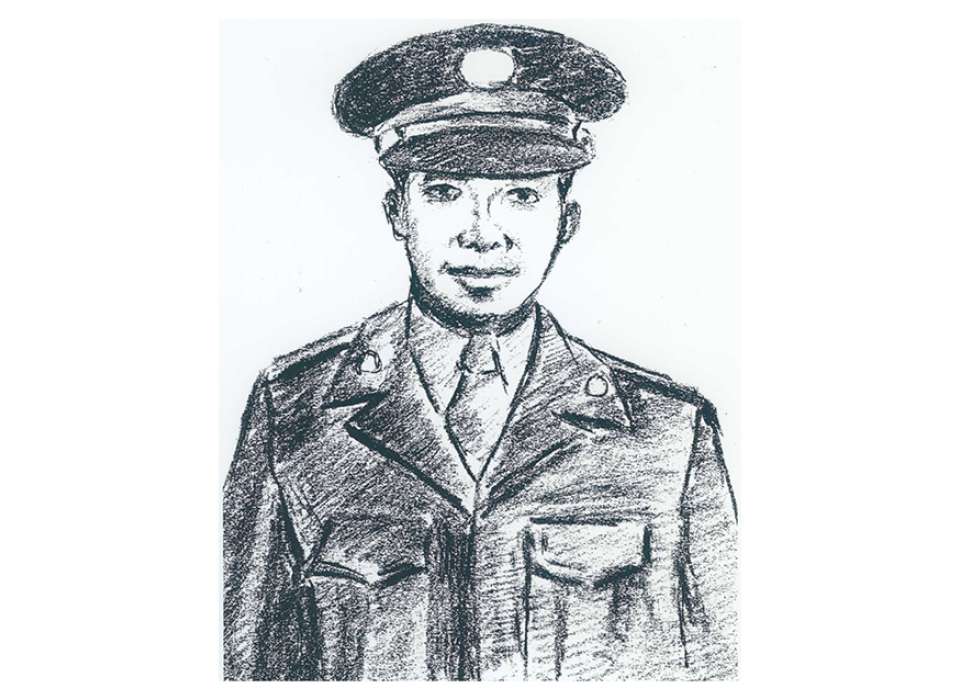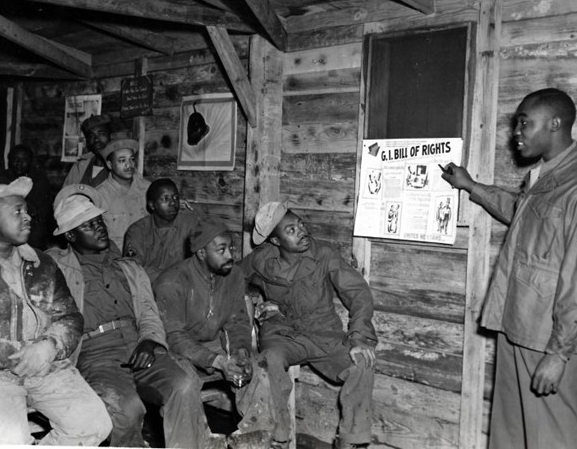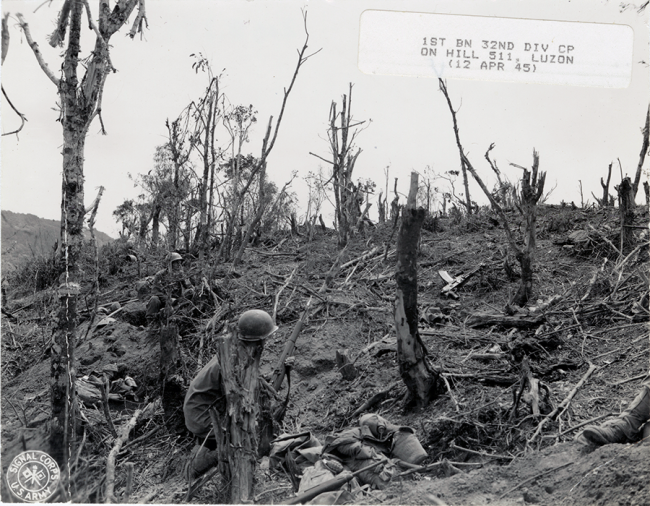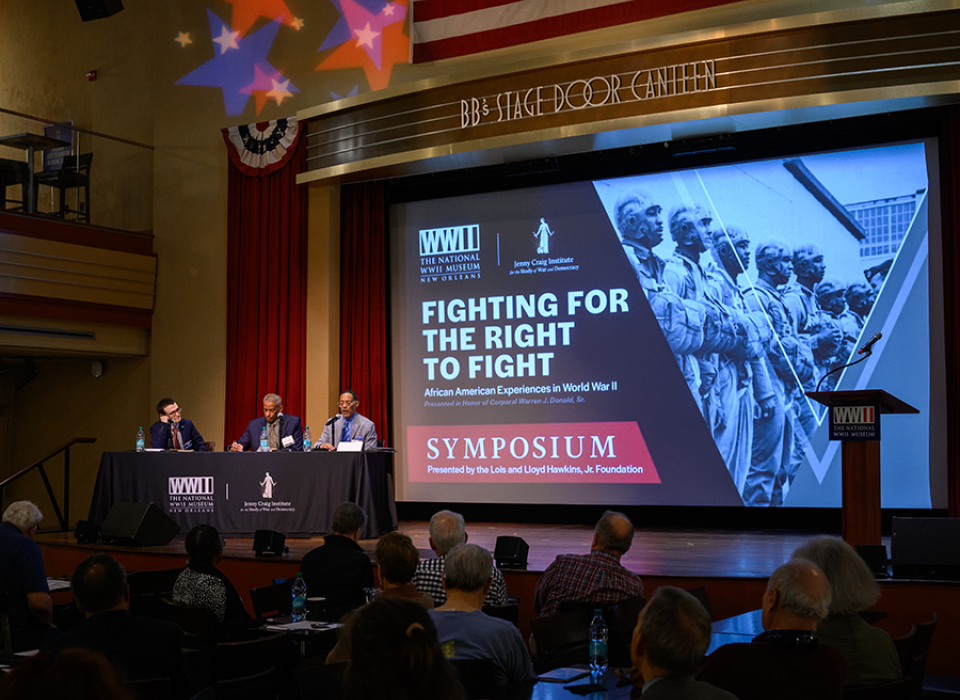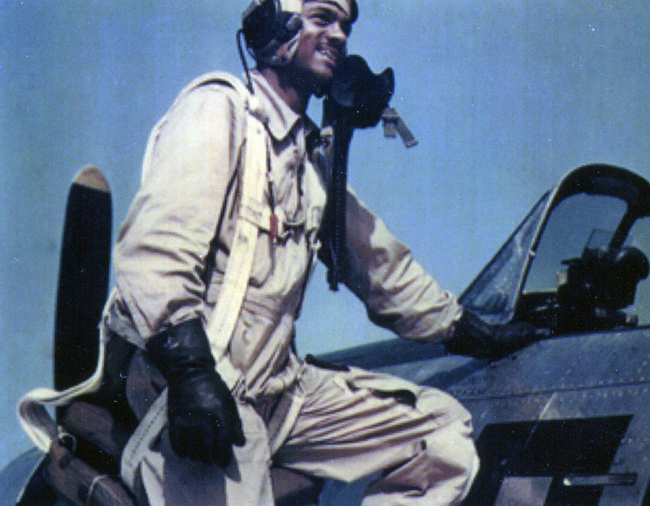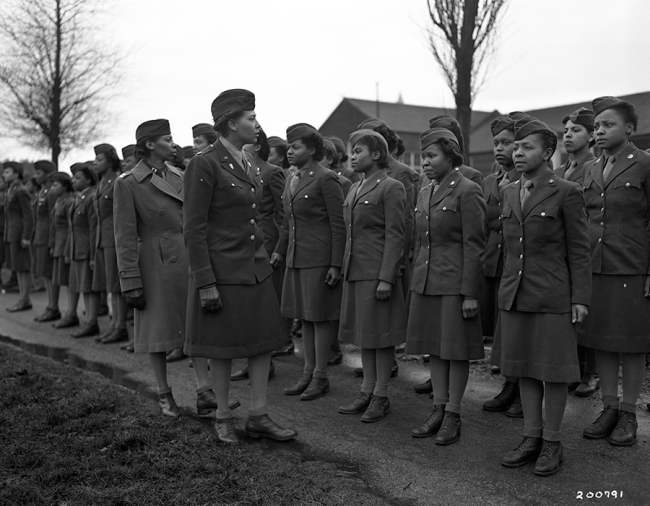Top image is a portrait of Medal of Honor Recipient PFC Willy F. James, Jr. courtesy of the James and Pender Families.
Willy F. James, Jr. was one of seven African Americans to receive the Medal of Honor for service in World War II, an award delayed decades by bias and discrimination. “He enlisted as a young man and he died as a young man,” recalled Margaret Pender, James’s family member, in the 2015 event, Unsung Heroes.
James was born on March 18, 1920 in Kansas City, Missouri and grew up there the only child of a widowed mother. He was drafted into the Army in September 1942, but before he left Kansas City, he married, not even having time for a proper honeymoon with wife, Valcenie.
In the last days of 1944, during the Battle of the Bulge, certain African American troops, formerly largely barred from combat duty, were called upon to volunteer and form replacement battalions to supplement depleted infantry regiments. James was one of more than 2,200 Black soldiers selected for an expedited four-week training course at the Ground Forces Reinforcement Center in France. He was recognized in that training for his marksmanship and leadership, and emerged as Private First Class James—a scout with the 413th Infantry Regiment, 104th “Timberwolf” Infantry Division.
Just two days after his 25th birthday, on March 20, 1945, PFC James and the other 413th Infantry Regiment reinforcements arrived in the ruins of Cologne, Germany, just two weeks after Americans first entered the ancient city. Joining up with the 2nd Battalion, they didn’t stay put for long. The next day, they crossed the Rhine River and relieved the 26th Infantry Regiment, 1st Infantry Division. Pinned down by German artillery for several days, the 413th slowly began to resume the offensive and gain ground. German POW numbers grew as some defenders were overrun, but SS troops remained at the attack, withdrawing to regroup as the Allies pushed ahead.
PFC James was one of several tapped to lead rifle squads in pursuit. After a firefight, near Paderborn, nearly 100 miles from Cologne, the three Black squads gained the advantage, ultimately capturing or killing 40 SS troops, an event that was reported on by Ann Stringer, a United Press war correspondent, who wrote, “An all-Negro platoon saw action for the first time today and licked Adolf Hitler’s supermen.” The 413th continued deeper into Germany, westward toward the Weser River.
On April 7, 1945, James’s unit crossed the Weser near Lippoldsberg. He was sent forward to scout the enemy position and made critical observations while pinned down by heavy fire for more than an hour. Still under fire, he raced back to his company to report his observations. Undaunted, James volunteered to lead the attack on Lippoldsberg. As the men advanced, they drew fire from every direction. SS troops emerged from the windows and doorways of the town. Platoon leader, Lieutenant A.J. Serabella was gravely wounded in the attack. James raced to his aid, intending to pull him to safety. Before he could make any movements, James was struck and killed by German sniper fire.
Valcenie James, widowed at age 25, received her husband’s posthumous Distinguished Service Cross in September 1945. Not a single photograph of James existed, so Valcenie commissioned a portrait of her husband as a way to remember him. James’s legacy lives on at The National WWII Museum and in the exhibition Fighting for the Right to Fight: African American Experiences in World War II. His grave in Netherlands American Cemetery in Margraten, and those of the other 8,300 Americans buried there, is lovingly tended by the American Battle Monuments Commission, the Dutch people, and visitors who come year-round to pay their respects.
In 1996, the United States Government affirmed that seven African Americans, including PFC James, had been unjustly denied the Medal of Honor for actions during World War II. In a 1997 White House ceremony, President Bill Clinton presented Valcenie James with her husband’s Medal of Honor, the US military’s highest decoration. It had taken more than 50 years for this belated recognition of his heroic acts performed under the most adverse conditions.
MEDAL OF HONOR CITATION FOR PRIVATE FIRST CLASS WILLY F. JAMES, JR:
For conspicuous gallantry and intrepidity at the risk of his life above and beyond the call of duty: Private First Class Willy F. James, Jr. Distinguished himself by extraordinary heroism at the risk of his own life on 7 April 1945 in the Weser River Valley, in the vicinity of Lippoldsberg, Germany. On 7 April 1945, Company G, 413 Infantry, fought its way across the Weser River in order to establish a crucial bridgehead. The company then launched a fierce attack against the town of Lippoldsberg, possession of which was vital to securing and expanding the important bridgehead. Private First Class James was first scout of the lead squad in the assault platoon. The mission of the unit was to seize and secure a group of houses on the edge of town, a foothold from which the unit could launch an attack on the rest of the town. Far out in front, Private First Class James was the first to draw enemy fire. His platoon leader came forward to investigate, but poor visibility made it difficult for Private First Class James to point out enemy positions with any accuracy. Private First Class James volunteered to go forward to fully reconnoiter the enemy situation. Furious crossfire from enemy snipers and machine guns finally pinned down Private First Class James after making his way forward approximately 200 yards across open terrain. Lying in an exposed position for more than an hour, Private First Class James intrepidly observed the enemy’s positions which were given away by the fire Private First Class James was daringly drawing upon himself. Then, with utter indifference to his personal safety, in a storm of enemy small arms fire, Private First Class James made his way back more than 300 yards across open terrain under enemy observation to his platoon positions, and gave a full, detailed report on the enemy disposition. The unit worked out a new plan on maneuver based on Private First Class James’ information. The gallant soldier volunteered to lead a squad in an assault on the key house in the group that formed the platoon objective. He made his way forward, leading his squad in the assault on the strongly held enemy positions in the building and designating targets accurately and continuously as he moved along. While doing so, Private First Class James saw his platoon leader shot down by enemy snipers. Hastily designating and coolly orienting a leader in his place, Private First Class James instantly went to the aid of his platoon leader, exposing himself recklessly to the incessant enemy fire. As he was making his way across open ground, Private First Class James was killed by a burst from an enemy machine gun. Private First Class James’ extraordinary heroic action in the face of withering enemy fire provided the disposition of enemy troops to his platoon. Inspired to the utmost by Private First Class James’ self-sacrifice, the platoon sustained the momentum of the assault and successfully accomplished its mission with a minimum of casualties. Private First Class James contributed very definitely to the success of his battalion in the vitally important combat operation of establishing and expanding a bridgehead over the Weser River. His fearless, self-assigned actions, far above and beyond the normal call of duty, exemplify the finest traditions of the American combat soldier and reflect with highest credit upon Private First Class James and the Armed Forces of the United States.
Kim Guise
Kimberly Guise holds a BA in German and Judaic Studies from the University of Massachusetts Amherst. She also studied at the Universität Freiburg in Germany and holds a masters in Library and Information Science (MLIS) from Louisiana State University. Kim is fluent in German, reads Yiddish, and specializes in the American prisoner-of-war experience in World War II.
Cite this article:
MLA Citation:
APA Citation:
Chicago Style Citation:
